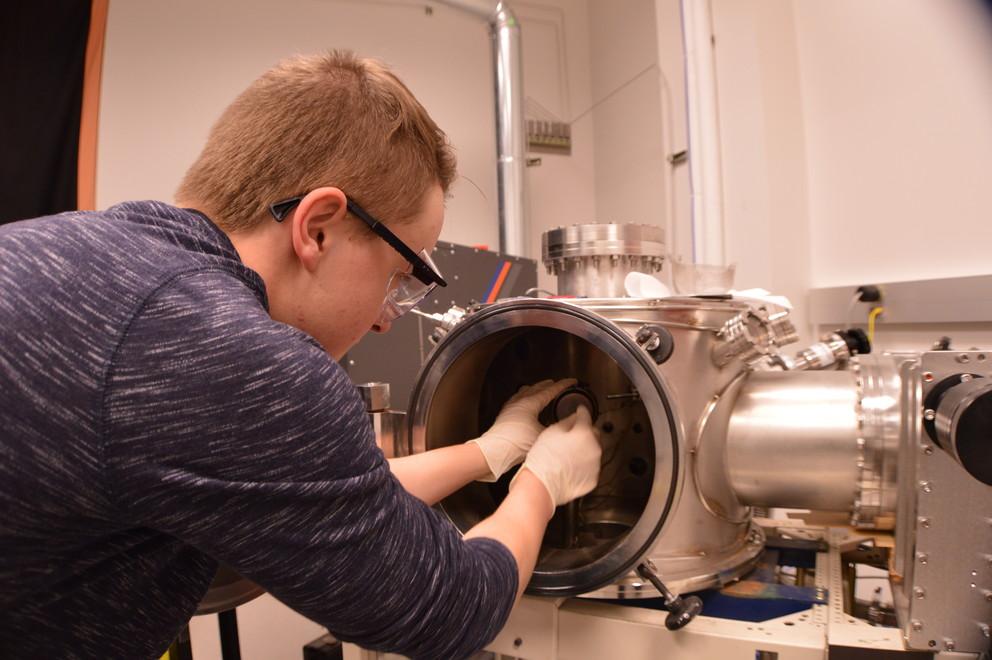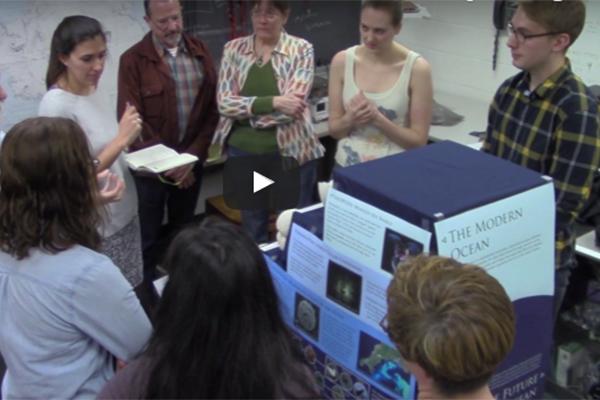Read the latest news about research conducted by investigators in the College of Earth and Mineral Sciences. Our faculty and students are continually advancing technology, creating solutions and expanding knowledge with new and innovative research.
News
The Engineering Graduate Student Council has announced the winners of the 14th annual College of Engineering Research Symposium, held on Tuesday, April 4, at the Nittany Lion Inn.
The Institute for CyberScience (ICS) has announced that 20 Penn State faculty are recipients of 2017 ICS Seed Grant Program awards. The awards, ranging from $4,000 to $25,000, support researchers doing innovative interdisciplinary research, laying the groundwork needed to apply for large external funding awards.
A new method to improve semiconductor fiber optics may lead to a material structure that might one day revolutionize the global transmission of data, according to an interdisciplinary team of researchers.
Unprecedented summer warmth and flooding, forest fires, drought and torrential rain — extreme weather events are occurring more and more often, but now an international team of climate scientists has found a connection between many extreme weather events and the impact climate change is having on the jet stream.
Jenna Bishop, a senior majoring in environmental systems engineering, has taken advantage of several opportunities as an undergraduate. From serving as president of the EMS Student Council, to playing the role of captain for Relay For Life, to dancing for THON, a student run philanthropy at Penn State, Bishop has no shortage of memorable moments. However, she says one of her proudest moments was publishing research as an undergraduate.
Erica Smithwick, ecologist and associate professor of geography, is among four women profiled who inspire students to pursue careers in science, technology, engineering and math.
he Penn State Student Association of Environmental Science and Engineering (SAESE) will hold the 20th annual Environmental Chemistry and Microbiology Student Symposium (ECMSS) from 5-9 p.m. on April 21 and 9 a.m.-6 p.m. on April 22 in the Forest Resources Building. Abstract submission deadline is March 24.
Penn State once again has been recognized by the U.S. Department of State’s Bureau of Educational and Cultural Affairs as one of the U.S. colleges and universities that produced the most Fulbright Scholars in the 2016-17 awards cycle. This year, 11 scholars were recipients of this prestigious grant and Penn State tied for second place.
An endowed professorship is opening doors for two Penn State students to obtain laboratory experience as undergraduates. These materials science and engineering majors, Atraphol Sae-Tang and Evan McHale, are conducting research for their senior theses in the Millennium Science Complex with Susan Trolier-McKinstry, Steward S. Flaschen Professor of Materials Science and Engineering.
Geosciences graduate students worked to create a new exhibit in the EMS Museum & Art Gallery. The exhibit focused on several students' research and employs numerous hands-on activities to create an interactive exhibit.











